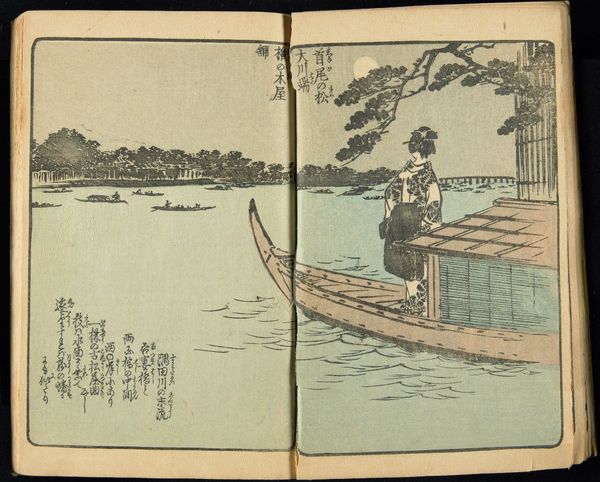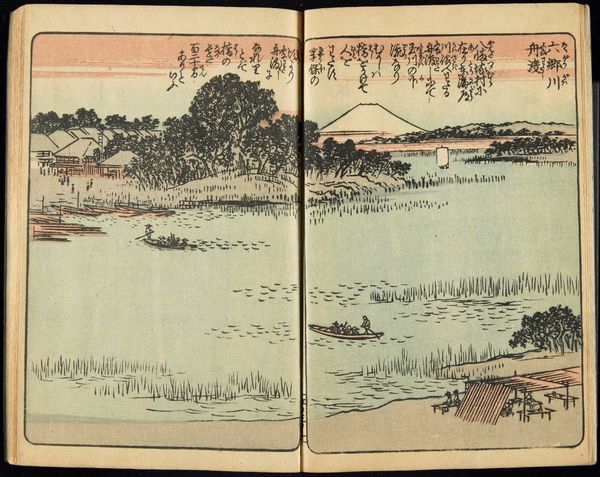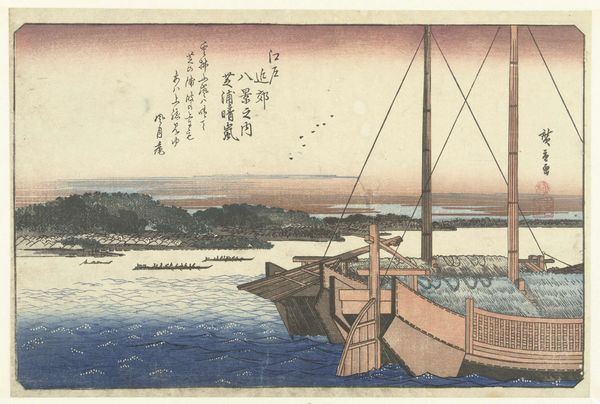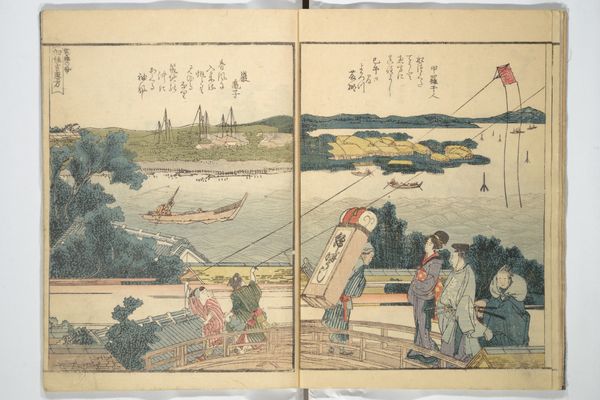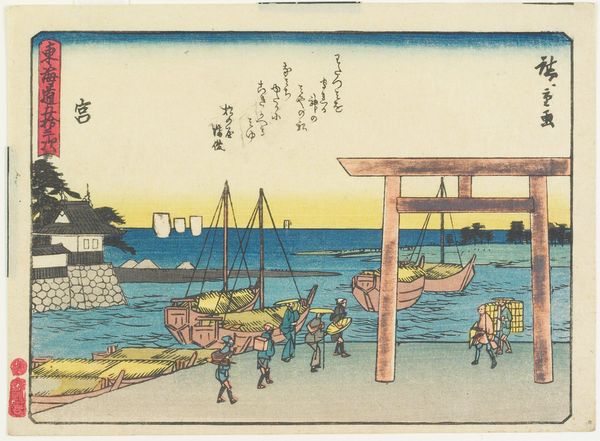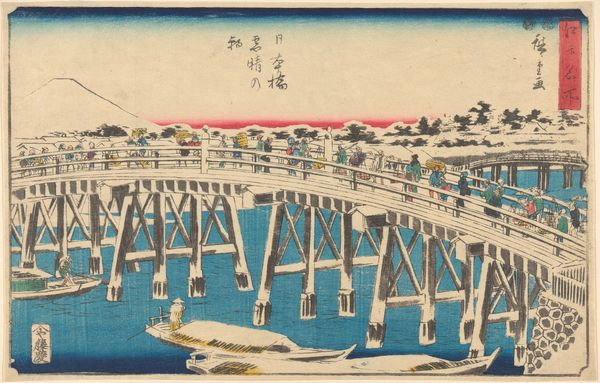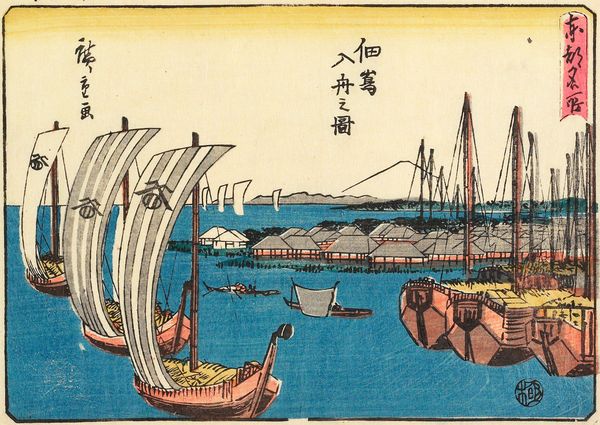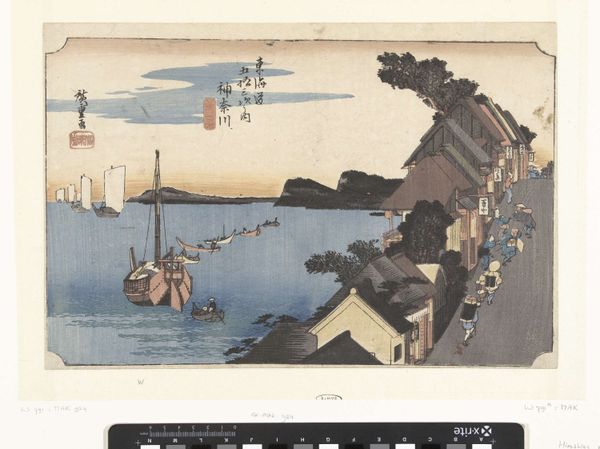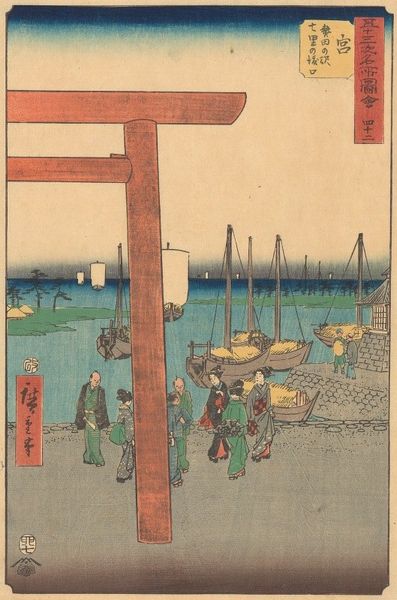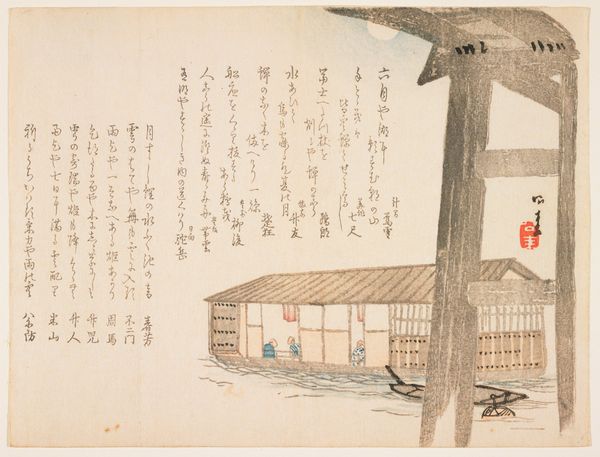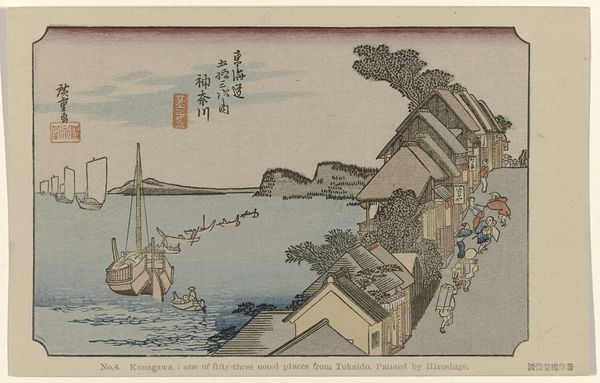
Illustrated Book -Souvenir of Edo- vol. 3(south) 1850
0:00
0:00
print, etching, paper, ink, woodblock-print
# print
#
etching
#
book
#
landscape
#
ukiyo-e
#
japan
#
paper
#
ink
#
woodblock-print
Dimensions: 7 1/16 x 4 13/16 x 3/16 in. (18 x 12.3 x 0.5 cm) (outer frame)
Copyright: Public Domain
Curator: Let's consider this double-page spread from Utagawa Hiroshige's "Illustrated Book - Souvenir of Edo - Vol. 3 (South)," dating back to 1850. It’s a woodblock print, showcasing the beauty of Edo, present-day Tokyo, through a very particular lens. Editor: My immediate reaction is serenity, actually, despite the clear structure imposed by those dominating bridge supports. There’s a subtle palette here; it's quite tranquil. But there is tension, perhaps socio-political. Curator: Yes, that imposed structure… It speaks to order and control but consider also that Edo, as a subject, often represented a cultural high point under the Tokugawa Shogunate but also reveals the rigid class structure that supported it. The bridge, then, is not only functional but symbolically divides. Editor: I appreciate that perspective. I wonder, looking at those boats further in the image, how the water mediates and resists that division. They are not central, pushed back even, and hint at perhaps working class individuals present in this very ordered context. The pale, cool coloring almost romanticizes class disparity, even today. Curator: And within ukiyo-e tradition, we see this ephemeral world beautifully captured. Consider those bridge pilings, anchoring this scene but ultimately, impermanent in the grand scheme. The text integrated on the left, for example, reinforces this idea –a constant reminder of passing time. The pale blues and peach recall traditional feminine symbols of Japanese woodblocks, hinting at how femininity has adapted and resisted cultural shifts over time. Editor: The visual tension you mentioned is present on several fronts. Gender. Socio-economics. What has changed, what continues? Thinking through those dynamics helps ground these beautiful prints in material realities beyond fleeting aesthetics. Curator: Absolutely. It’s through revisiting these visual documents that we grapple with collective memories of both splendor and injustice, isn't it? Editor: Exactly. Context is paramount. That push and pull between artistic expression and underlying realities creates meaning and purpose. It is about honoring where we have come from but still interrogating it.
Comments
No comments
Be the first to comment and join the conversation on the ultimate creative platform.
